SUGAR-HOLISM, THE EPITOMY OF HUMANITY
Sugar consumption per capita in 1800 was a 14 pounds a year. In 2010, that figure was upped to 174 pounds of sugar a year introduced to your body. That sugar has to be metabolized, and in the process the system gets overwhelmed, exhausted, and collapses to the state of disease. The remaining unprocessed sugar will be fermented by bacteria which overwhelms the eco-system, simply taking advantage of available substrate, multiplying into big numbers, displacing the existing healthy flora and converting your digestive tract to a brewery of toxic by-products, converting sugar to acid, and preparing the real-estate for fungal infections. If this process is not stopped, reversed, or balanced, the consequence will be that the person ends up with diabetes, rotten teeth, bleeding gums, and galloping periodontitis, which directly correlates to arteriosclerosis, which will lead to heart attacks, strokes and pulmonary embolism and a plethora of other chronic diseases like arthritis, kidney stones, and cataracts.
The gradual increase, every year in the last century, of sugar consumption has created an imbalance, a form of ecological crisis by favoring Streptococcus Mutans. This bacterium is a perfect converter of sugar to lactic acid, and in turn a higher concentration of lactic acid will poison some of its competitors and will dissolve the hydroxyapatite (the calcium bone material) from the teeth. This is a form of domino effect, disrupting the ecological balance of the human eco-system. The overwhelming dominance of one strain of bacteria and its metabolic by-products which are highly toxic will have a ripple effect on the entire eco-system of the body.
Consumption of yogurt reduces the count of S. Mutans. (Archives of Oral Biology). Today an estimated 366 million people worldwide now suffer from diabetes and the epidemic is getting worse. The International Diabetic Federation describes the numbers as “staggering” with one person dying from diabetes every seven seconds. Here I have to agree with those who correctly conclude “that it is quite apparent that most modern diseases and suffering are the end product of the arrogance and ignorance of man, whom with his limited wisdom and resources in the end must look back to the Creator of all things for answers and restitution.” Excessive sugar consumption is mirrored by chronically elevated blood glucose levels. Featured in (Academia News 2012) the latest research suggest that hyperglycemia my related to cardiac damage independent of atherosclerosis. Researchers followed 9,662 patients, none of the participants had coronary disease or a history of heart failure. With the high-sensitivity cThT test, low levels of troponin T (a blood marker for heart damage) were found in 66% of the study population. The elevated glucose in the bloodstream might not only be related to increased atherosclerosis but potentially may directly damage the heart muscle. The excessive consumption of sugar is far more damaging to the body than alcohol and cannabises combined.
HISTORICAL BACKGROUND OF THEORIES
It will only take to allow one single theory regardless of how brilliant and scientifically correct is at the time of its implementation to see how it will evolve and take control of all aspects of life in the material plain, intellectual and even spiritual affecting all realities of our life’s and well-being. This will be illustrated by scrutinizing the effects of the life work of two French giants in the medical field. Luis Pasteur (1822-1895) and Claude Bernard (1813-1878).
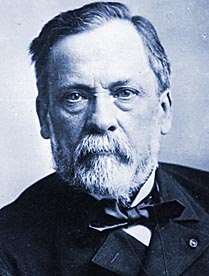
Louis Pasteur 1822-1895
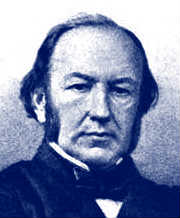
Claude Bernard (1813-1878)
Pasteur creator of the “Germ Theory of Disease” the theory claims that fixed species of microbes from an external source invade the body and are the first cause of infections. Robert Koch (1843- 1910) the first scientist to devise a series of tests used to assess the germ theory of disease and founder of the protocol which describe the necessary steps to follow in order to prove the connection between the causing agent and the disease known as “Koch Postulate”
There are four of them:
2) The pathogen can be isolated from the diseased host and grown in pure culture.
3) The pathogen from the pure culture must cause the disease when introduced into a healthy susceptible laboratory animal.
4) The pathogen mast be reinsulated from the new host and shown to be the same as the originally inoculated pathogen.
Pasteur, himself, never satisfied the Koch postulate in his research his methods were rather crude lacking sophistication. The man himself was ambitious self promoting type.
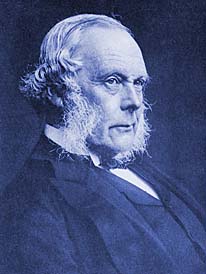
Joseph Lister (1827-1912)
Joseph Lister (1827-1912) was a surgeon known as “The Father of Antiseptic Surgery” who created a practical application of Pasteur’s theory. This theory became officially accepted as the foundation for Western Medicine, also called monomorphism (single form or one form). It was adapted by American Medical/Industrial Complex which is a billion dollar industry and which presently successfully influences and controls all aspects of our health care system and indirectly the quality of our lives. It no longer matters that Louis Pasteur before his death retrieved his theory and stated that Claude Bernard was right. “The microbe is nothing, the terrain (environment) is everything.” Despite the fact that this theory, including the Koch postulate, applies only to the planktonic form of bacteria which represents only 20% of microorganisms and also only to the species that can be grown in the culture media – which is again only 20% of the known species – the theory controls the petrified minds of today’s medical establishment including our health care system.
Let’s ask ourselves a question: what is a health care system built on this theory doing for you? The answer is plain: it does nothing. It simply waits for you to get sick and then aggressively intervenes, mostly to eliminate the symptoms of the disease, seldom addressing the underlining causes, exposing the body to chemo or radiation, which in many cases does you in faster than the disease itself. The theory renders you impotent and prevents you from taking any action because this monomorphic agent of infection is in the air, water and soil and it is inevitable that it will strike you sooner rather then later. It is quite apparent that the health care system based on this type of philosophy is only a one-sided, unbalanced, fractural system, covering only a small percentage of the physical body. By artificially dissecting it to pieces and trying to fix a piece at the time, it disregards the environment and the rest of the body. This system places us under strict control of forces which profit immensely from this status quo. We are now living under the influence of Louis Pasteur’s legacy.
On other hand Claude Bernard argued the importance of balance of the body’s internal environment as the condition for a free and independent life.
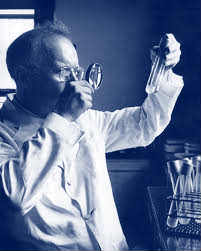
Rene Dubois (1901 - 1982)
The body becomes susceptible to the infectious agent only when the internal balance’s homeostasis is disrupted. The renowned 20thcentury French-American microbiologist Rene Dubos (1901-1982) agreed with Bernard’s principle by stating, “Most microbial diseases are caused by organisms present in the body of a normal individual, they become the cause of the disease when the disturbance arises in the equilibrium of the body.”
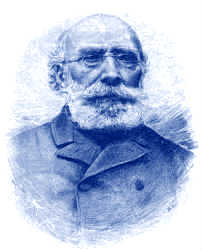
Antoine Bechamp (1816-1908)
Antoine Bechamp (1816-1908) extended Bernard’s idea to his concept of polymorphism (poly-many and morph-form), a revolutionary concept in the further study of microbiology and disease etiology. Bechamp’s lifetime of research developed the basis for a theory that microorganisms could change their size as well as their shape, depending on the state of health of the host in which the microorganism lived. This finding collaborates with the broader notion that slight changes in the environment will affect the flora which will rapidly adapt to the changes. The polymorphic organism will evolve with new strategies to enhance their survival; some new forms may evolve which will overwhelm the environment to the point of its collapse.
The researchers in MIT’s Department of Civil and Environmental Engineering (CEE) provide evidence which findings get to the heart of scientific question: how to delineate species of bacteria – or determine if the term “species” even applies to bacteria, which are typically identified as ecological populations and not species. If all bacteria in population are clones from a common ancestor, the idea of species doesn’t apply. The term “ecologically specialized population” may be more warranted.
In 1969 in a paper presented to New York Academy of Sciences, Dr. Virginia Livingston and Dr. Eleanor Alexander-Jackson declared that a single cancer microorganism exists. They asserted “The organism has remained an unclassified mystery, due in part to its remarkable pleomorphism and its simulation of other microorganisms its various phases may resemble viruses, microccocci, diptheroids, bacilli and fungi.” These are remarkable discoveries, which shed some light on the mystery of carcinogenesis and chronic diseases. The problem is that they directly collide with the accepted theory of monomorphism and will be rendered as impossible by mainstream science. I will provide more evidence later.
The function of homeostatic balance is reflected in the growing influence of the ancient medical systems of India and China. In China the doctor gets paid to keep the population healthy, when somebody gets sick, the doctor has no rewards for his treatment. This is a perfect example of sound preventive medicine policy – something to consider for our health care reform. The reform will require fundamental changes of philosophical bases which will allow us to move away from medicine that is waiting for you to get sick, to medical practice which will prevent and protect you from getting sick in the first place. Before this can take place, heath care will have to break away from the vise of drug cartels and reform the education system.
Based on this cornerstone of Claude Bernard’s thesis we can clearly see that we have tremendous influence and control of the environment we are in. We can control our health by controlling what we eat, what we drink, and what supplements we take. We can educate ourselves as to what is the best health care for us; we can set the conditions for a free and independent life. This belief system directly collides with the established monopoly of the agro-medico-drug cartel which, with the unlimited recourses through massive advertising and enforcement agencies at its disposal, successfully controls and defends the territory of its influence, basing its scientific rationale on the influence of a man’s reputation (Louis Pasteur) rather than on the true science.

RIVER:
Symbol of death and rebirth; (baptism), the flowing of time; transitional phases of life cycle; symbol of change; journey in time.
BACTERIA, A FRIEND AND ENEMY
You are about to learn how some of the worst tooth and jaw infections will produce no pain and in spite of this, they are a time-bomb producing lethal disease in distant target organs. No part of your body is immune to it. You will gain some understanding and knowledge about the true agents responsible for these infections, their strategies which lead them to adversely affect 90% of global population. Their success is a measure of our failure. According to Patrick Stortebecker M.D., Ph.D., formally associate Professor of Neurology, Karolinska Institute, Stockholm, and University of Goteberg, Sweden: “Various microbes and their toxins, dwelling within chronic dental infections, may spread to the brain and cause different types of lesions.” “It may be asked,” Dr. Stortebecker says, “whether Western civilized people, harboring chronic dental infections, are jeopardizing their health, as well as their brains.”
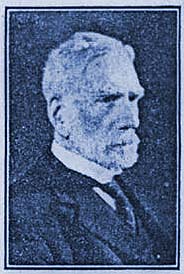
William Russell 1852-1940
Let’s look at the findings introduced by William Russell (1852-1940) in the summary of his findings presented in “An Address on a Characteristic Organism of Cancer.” Russell, a pathologist in the school of medicine at the royal infirmary in Edinburgh, observed microscopically in fuchsine stained tissue sections from all forms of cancer that he examined as well as cases of tuberculosis, syphilis and skin infections. He described and photographed this parasitic bodies in the tissue cells (intracellular) and outside the cells (extra-cellular) . They are commonly known as “Russell Bodies.” The idea of Russell Bodies has been kicked around for almost a century. In that time we have sent a man to the moon and back, resolved and gained understanding of tuberculosis, leprosy, syphilis, small-pox, polio, malaria and other viral, bacterial and parasitic diseases, yet still the Russell Body remains a Russell Body.
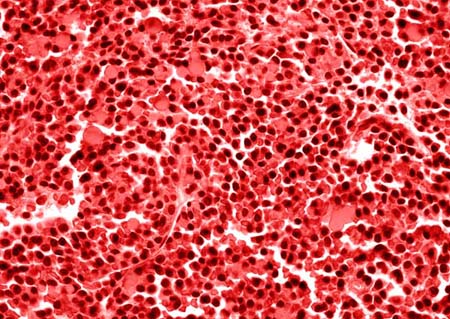
Russell Bodies
Why cannot we accept the explanation proposed and documented by many researchers: that the Russell Body is a bacterial infection of the cells and extra-cellular space in various cycles of the development of the pathogen in its new environment, in which all the available strategies of survival will manifest themselves and be played out.
I think that it is about time to start paying close attention to the 99% of the gene pool which is not ours. What do we know about bacteria that enters our bloodstream? To attempt to answer this question we have to start with a basic understanding of life principles. The evolution of life depends on its ability to process information, gather the intelligence and respond to it in an organized manner. In order to make this possible there is a fundamental need for communication. In order to study life in its natural form, its principal requirement will be to learn the languages spoken on intercellular and intermicrobial level. But does this mass of 1,000 trillions of bacterial cells have any awareness of itself? Do they communicate among themselves? Is there a language which an estimated 1,000 species of bacteria has perfected? Does every species have its own language? Do they have a common one?
To answer all these questions I have to introduce you to a remarkable woman, the enthusiastic professor from Princeton University, Dr. Bonnie Bassler. Prof. Bassler in her pioneering research has figured this out. The answer to all these questions is one big “yes.” This open the gates to new discipline of further study named sociomicrobiology. The bacteria do communicate; every species has its own chemical language and they have “Esperanto,” the language of all. You may say they all have a cell phone which is in constant use. The microbial society has had this capability for very long time, millions of years.
“Quorum sensing” (QS) is the regulation of gene expression in response to fluctuation in cell population density. Through “Quorum sensing” the bacteria are aware of the size of its population and its readiness to start synchronized action against the host through “Quorum acting,” by releasing their toxins simultaneously. The effects of these actions are very familiar to all of us, especially the gastro-intestinal infections, or massive acute inflammatory responses provoked by the rapid overgrowth of specific strains of bacteria. But please remember we have to prepare the environment for this to happen or bring the pathogen from outside, usually with infected food, direct contact, by ingesting contaminated water, by insects like mosquito or ticks (disease vector), contaminated surroundings like animal droppings, rats, rabbits, ants, fleas, cockroaches, birds or contaminated air, or human-domestic animal, wildlife interface vectors. These are the common transmitters.
BLACK PLAGUE DEATH
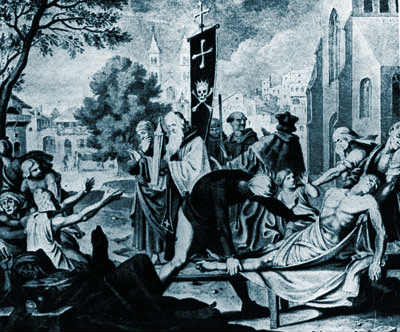 The 14th century Black Death plague, an infection of rodents transmitted to humans by infected rat fleas and further from infected humans through aerosol transmission to the entire population, was literally like the four horsemen apocalypse that reigned Europe and Asia. The Black Death plague was one of great epidemic scourges of mankind. The infection changed the human immune system by wiping out people who couldn’t deal with the infection. The survivors’ immune system was changed forever. Two-thirds of human population was eliminated, an estimated 75 million people died during the four years of pandemic. People thoroughly believed that it was the end of the world.
The 14th century Black Death plague, an infection of rodents transmitted to humans by infected rat fleas and further from infected humans through aerosol transmission to the entire population, was literally like the four horsemen apocalypse that reigned Europe and Asia. The Black Death plague was one of great epidemic scourges of mankind. The infection changed the human immune system by wiping out people who couldn’t deal with the infection. The survivors’ immune system was changed forever. Two-thirds of human population was eliminated, an estimated 75 million people died during the four years of pandemic. People thoroughly believed that it was the end of the world.
There are two deadly forms of the plague: bubonic plague, entry to the body by bite of infected rat flea, which spreads through lymphatic system and is systemic, causing organ hemorrhage (“Buboes,” black hemorrhage lymph nodes), and pneumonic plague, highly contagious entry to the body through body fluids contact and aerosols, causing pneumonia with usually a 100% mortality. The infecting agent was Yersinia pestis, a gram negative bacteria that can grow with or without oxygen (a quality called facultative anaerobic), named in honor of Alexander Yersin who isolated the bacteria in 1894 during the pandemic of the 1860s in China. As you can see through this essay the emphasis here is on changes in the environment, which always is the major determinating factor for presetting conditions for the event. In this case, let’s look and see if the bubonic plague was caused by the changes in the environment.
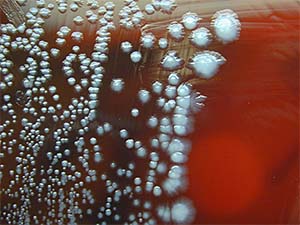
Yersinia pestis
14th century, the disastrous 14th century, was characterized by a medieval superstitious society, a time of the turmoil, diminished expectations, loss of confidence in institutions. The corruption and moral laxity of the church reached an all time low. The Pope resided in Avignon, not in Rome, the nations had been plunged into turmoil by the Hundred years war, raids by British pirates, famine, food shortages, reports of cannibalism, and epidemics. This great western schism lasted until 1447. Islam made its deepest penetration into Europe. Episodes of hysteria and religious fanatics ware common.
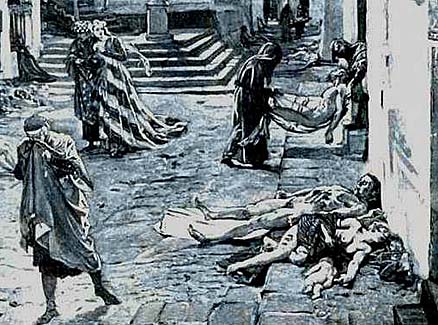
Black Death Ravages Europe
All these variables were actually under human control. The only one variable which humanity did not have any influence over was the dramatic change of the climate: the Little Ice Age was creeping in on the continent. The Baltic Sea froze for the first time in known history. The crop failure throughout Europe and long-lasting winters forced people into overcrowded shelters with no sanitation. These human quarters were infested with rats and fleas, hunger and fear had weakened the immune system of the population. All those factors combined with a dramatically changed environment created a perfect breeding ground for this double-edged pathogen capable of thriving in both aerobic and non-aerobic environments. The pathogen spread like wildfire through communities, leaving piles of dead bodies on the streets of towns and villages. The system of sanitation was quickly overwhelmed and rendered completely impotent to deal with the situation. The dead corpses were decomposing on the streets, completing the doomsday scenario.
Again this is obvious that the chain of events initiated by human actions and uncontrollable circumstances led to these disasters.
All these invasive strategies of pathogenic bacteria are achieved by gene expression of the pathogens, which in reality is part of their survival strategy, a swift response to the challenge of a new environment.
